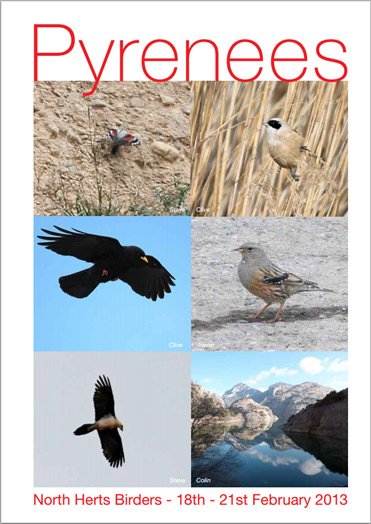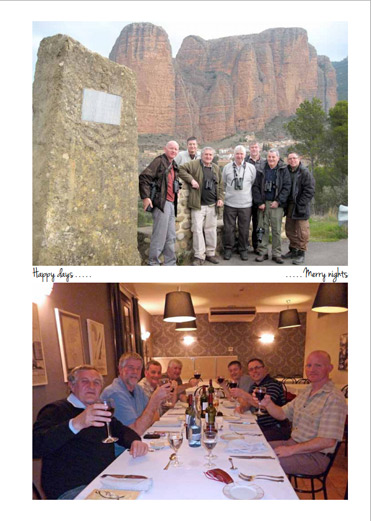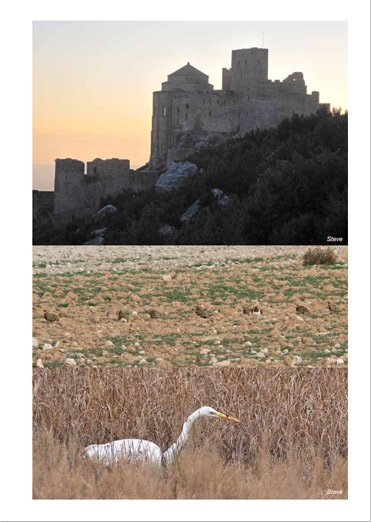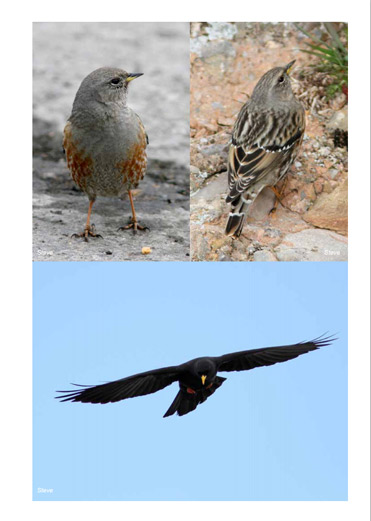Vulture visitors from Down Under
The following text and photos are kindly reproduced with the permission of their author, Ian Montgomery, who paid our raptor hides a visit this October.
The first photo shows part of Boumort National Reserve in the foothills of the Pyrenees in Catalonia about 40km southwest of Andorra. A reserve since 1991, It has an area of 13,000 hectares and is of special importance as one of the only places in Europe where all four European species of vultures breed. Three occur naturally, while the fourth, the Eurasian Black or Cinereous Vulture has been reintroduced, after becoming extinct in the Pyrenees in recent decades. I made arrangements to visit it through Steve West of Birding in Spain, including getting the necessary permit to photograph these birds, accommodation and transport.
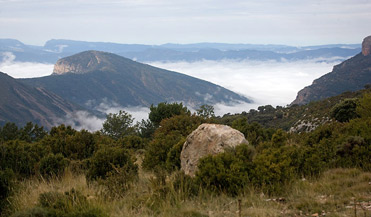
As part of the conservation effort, the vultures are fed three times a week and I was taken to the feeding site by two rangers who had collected carcasses and meat off-cuts from farmers in the vicinity. The site is equipped with a spacious and comfortable hide, complete with toilet, and I was left there alone for the day after they had spread out the meat and carcasses in front of the hide. When we arrived there were already between one and two hundred vultures, almost all Griffons, soaring high above. I had been briefed beforehand that the first arrivals would be Griffons, with Eurasian Blacks arriving later in the morning when the crowds thinned, while the iconic Lammergeier could be expected, probably, in small numbers in the middle of the afternoon. The fourth species, the Egyptian Vulture is a summer visitor and had already departed for Africa.
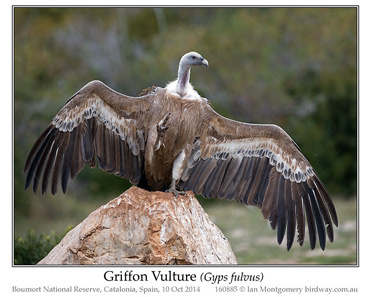
Sure enough, as soon as the rangers left, large numbers of Griffons glided in and squabbled noisily over the food. Griffons feed mainly on muscles and viscera and attacked the carcasses and pieces of meat with great gusto. The bird in the second photo showing its skill at balancing on a rock on one foot and waving the other is an adult, recognisable by its white ruff, horn-coloured bill and pale wing coverts. The one in the third photo is a juvenile, with grey bill, coffee-coloured ruff and darker wings. Juveniles generally had a covering of short plumage on the head and neck, while the adults often had relatively bare necks.
The breeding range of the Griffon Vulture extends from Portugal in the west to northeastern India and southwestern Kazakhstan in the east. Spain is its main stronghold in the west with about 8,000 pairs and the species is not considered under threat.
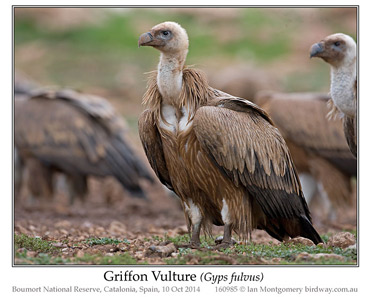
These birds are huge and it was wonderful to observe them up close. The black bird in the fourth photo sneaking a mouthful from under the watchful eye of a Griffon is a Common Raven. This is the largest passerine in the world, with a length of up to 67cm/26in and wingspan of up to 130cm/51in, larger than a Common Buzzard, but completely dwarfed by the vulture. Griffons are up to 110cm/43in in length, with a wingspan of up to 280cm/110in and weighting up to 11kg/24lbs.
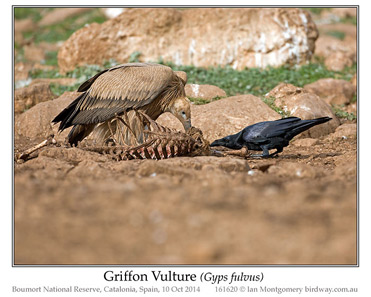
In the air, they glide effortlessly and powerfully and the enormous wings make the body appear quite small by comparison. They come into land looking like parachutists under square canopies but with the ponderous, unwavering stability of a large aircraft like a B747 or an A380. Look how elegantly and precisely the toes are arranged with all the poise of an Olympic diver, fifth photo.
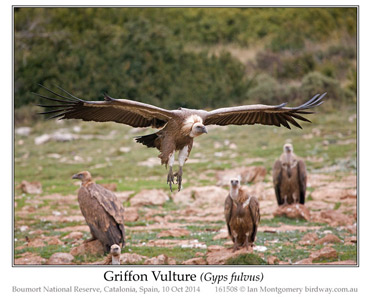
It really was an extraordinary experience watching the spectacle of these amazing birds, even if their table manners left much to be desired. The large amount of food disappeared at a great rate and the crowds started to disperse, leaving the scene, one hoped, for the later, rarer and more picky species. To be continued…
Greetings
Ian
Ian Montgomery, Birdway Pty Ltd,
454 Forestry Road, Bluewater, Qld 4818
Tel 0411 602 737 ian@birdway.com.au
Bird Photos http://www.birdway.com.au/
Where to Find Birds in Northern Queensland: iTunes; Google Play
Recorder Society http://www.nqrs.org.au

